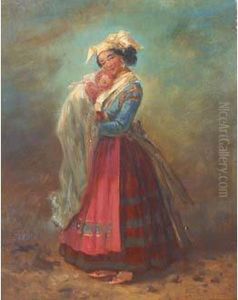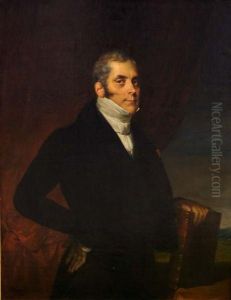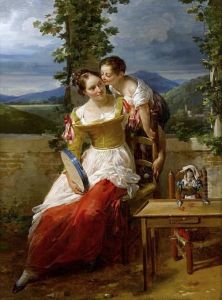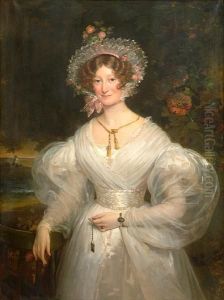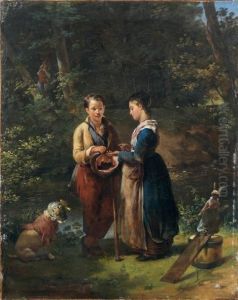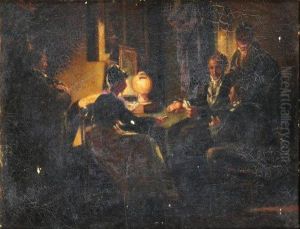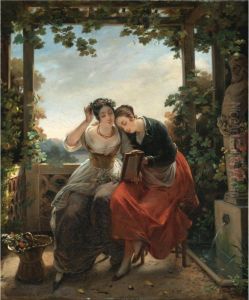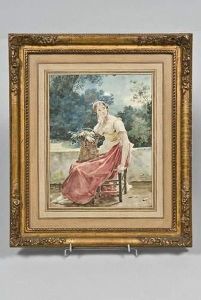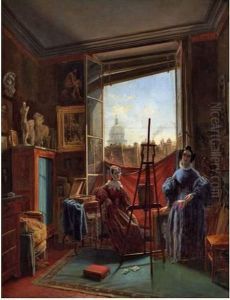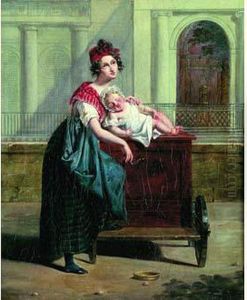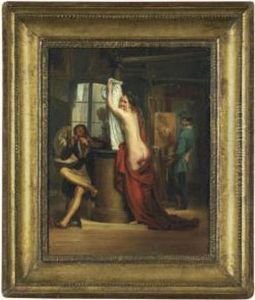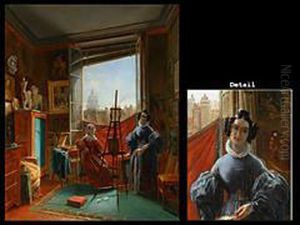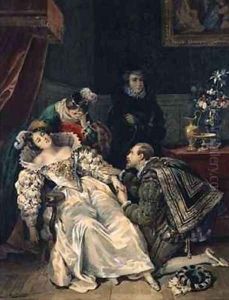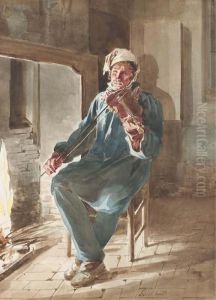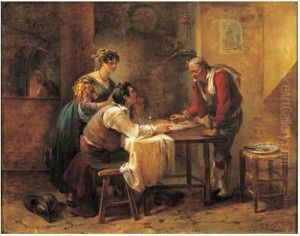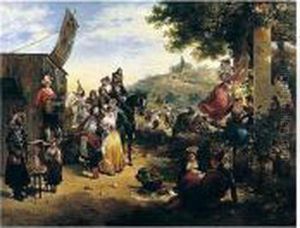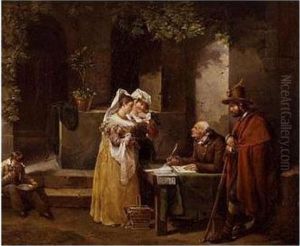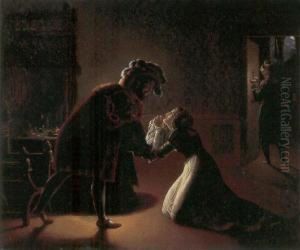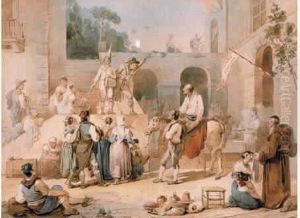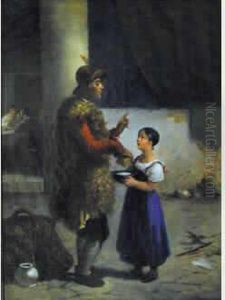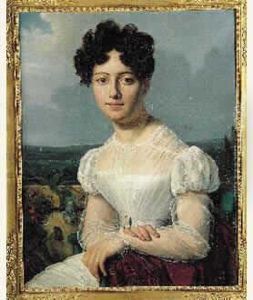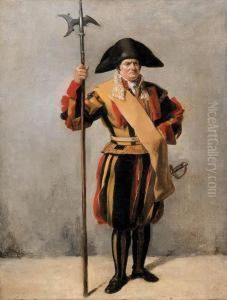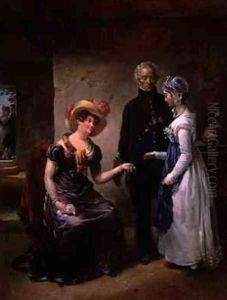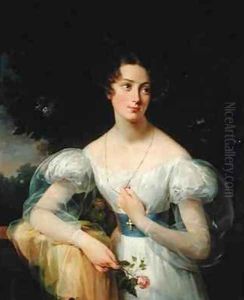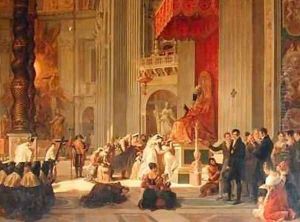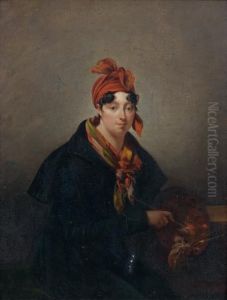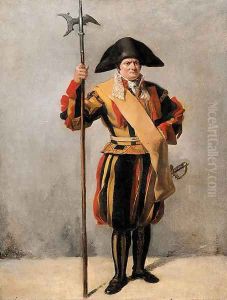Antoinette Cecile Hortense Lescot Haudebourt Paintings
Antoinette Cecile Hortense Lescot Haudebourt, more commonly known as Hortense Haudebourt-Lescot, was a distinguished French painter born in Paris in 1784. Her artistic journey began under the tutelage of Guillaume Guillon Lethière, a prominent French painter of the time, and she further honed her skills by studying the works of the Old Masters in Italy, where she spent a significant period from 1807 to 1810. Haudebourt-Lescot's artwork is characterized by its detailed observation, vibrant expression, and the incorporation of Neoclassical and Romantic elements, making her a unique figure in the art world of her time.
Throughout her career, Hortense Haudebourt-Lescot exhibited a profound interest in genre painting, focusing on scenes of everyday life that often depicted women in domestic and social settings. Her work was regularly showcased at the Paris Salon, the official art exhibition of the Académie des Beaux-Arts in Paris, from 1802 until her death in 1845. She gained significant recognition and was awarded numerous honors, reflecting her status as one of the leading female artists of her era. Despite facing the challenges inherent in a male-dominated art world, her talent, determination, and innovative approach to genre painting earned her a place among the most respected artists of her time.
Haudebourt-Lescot's contributions to art extend beyond her paintings; she was also a mentor to younger artists and an active participant in the Parisian cultural scene. Her legacy is preserved in the collections of several major museums, including the Louvre in Paris, where her work remains a testament to her skill and creativity. Hortense Haudebourt-Lescot passed away in 1845, leaving behind a body of work that continues to inspire admiration and scholarly interest for its artistic merit and historical significance.
